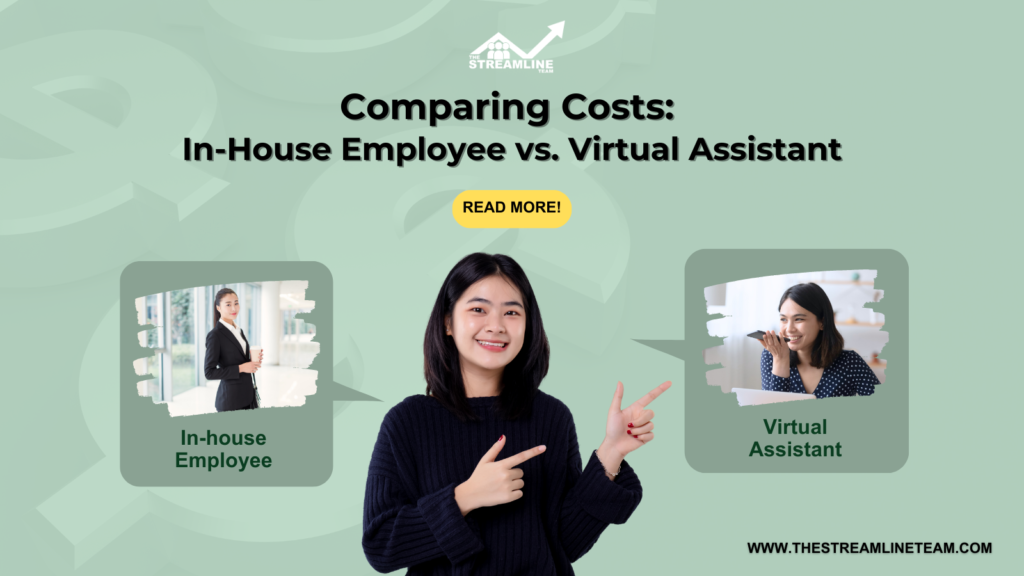
When it comes to hiring an employee, one of the most important considerations is the cost associated with it. There are two main options when considering hiring help: an in-house employee or a virtual assistant (VA). Each of these options comes with its own set of costs and benefits. In this blog post, we will compare the costs of hiring an in-house employee versus a virtual assistant.
1. Salary
The most apparent cost difference is in the salary. An in-house employee is typically paid a fixed salary or hourly rate, while a virtual assistant may charge a per-hour rate or a flat fee for a package of services. Generally, virtual assistants can be more cost-effective since you’re only paying for the time they spend working on your tasks. Plus, VAs come from various parts of the world with different cost-of-living expenses, which may reflect in their pricing.
2. Benefits
When hiring an in-house employee, you’re also responsible for providing benefits like health insurance, retirement contributions, paid vacation, and sick leave. These can add a significant amount to the total cost of employing someone. Virtual assistants, on the other hand, are typically self-employed or part of an agency, which means they are responsible for their benefits.
3. Office Space and Equipment
An in-house employee requires a workspace, a desk, a chair, a computer, and other office supplies. If your office space is limited, you might even need to rent a larger office. A virtual assistant works remotely, so you don’t need to provide office space or equipment, saving on rent, utilities, and supplies.
4. Training and Onboarding
New employees typically require an onboarding process, which might involve training on your company’s systems and processes. This can take up valuable time and resources. Many virtual assistants, however, already have experience and skills in their area of expertise and may require less training.
5. Taxes and Legal Fees
As an employer, you’re responsible for withholding taxes from your employees’ paychecks and paying employment taxes. You might also need to pay for legal fees associated with employment contracts and human resources support. Virtual assistants are generally considered independent contractors, so you’re not responsible for their taxes, they handle their tax obligations.
6. Flexibility
When you hire an in-house employee, you typically agree on a fixed schedule. With a virtual assistant, you can often have more flexibility in terms of hours worked. You can hire a VA for a specific project, for a certain number of hours per week, or on an as-needed basis. This flexibility can result in cost savings as you’re only paying for the assistance you need.
Conclusion
In summary, while both in-house employees and virtual assistants can be valuable assets to your business, they come with different cost structures. In-house employees may have higher upfront costs due to salaries, benefits, and office space requirements. In contrast, virtual assistants offer more flexibility and can be a more cost-effective solution, especially for small businesses or companies with fluctuating workloads. It’s essential to carefully consider your business’s specific needs and budget when deciding which option is right for you.

